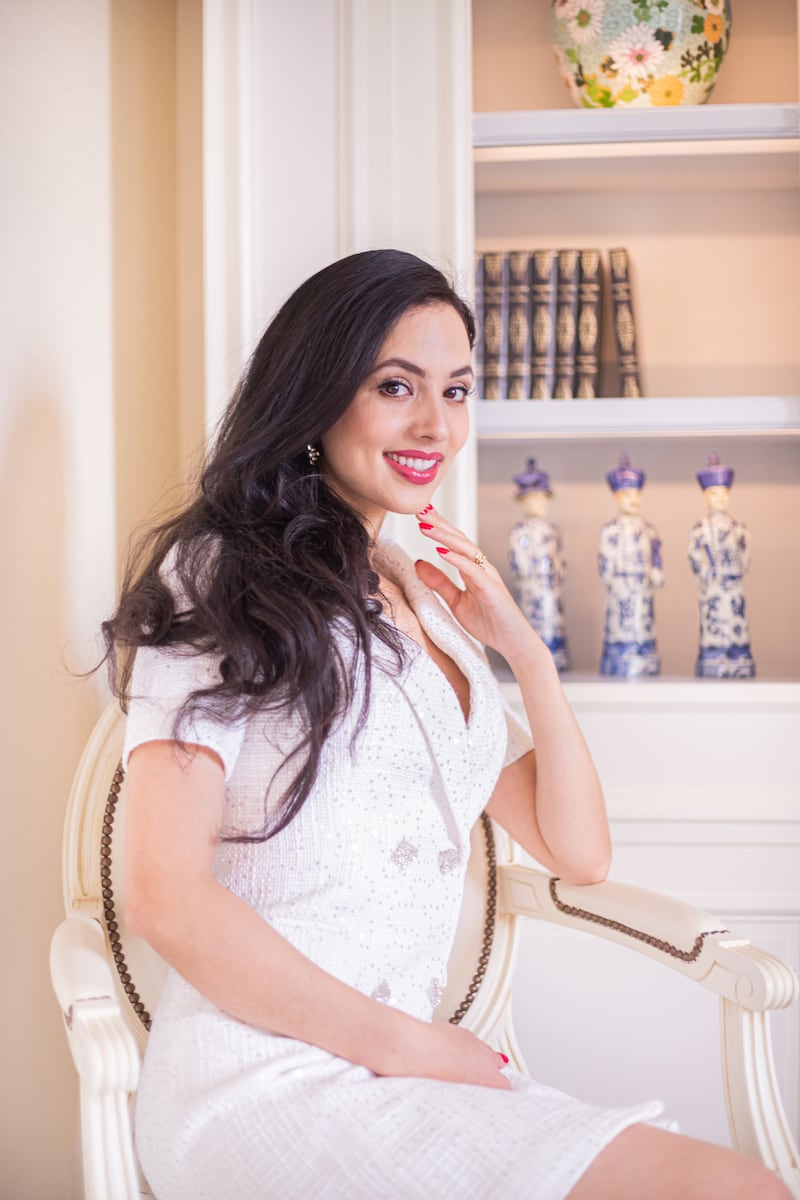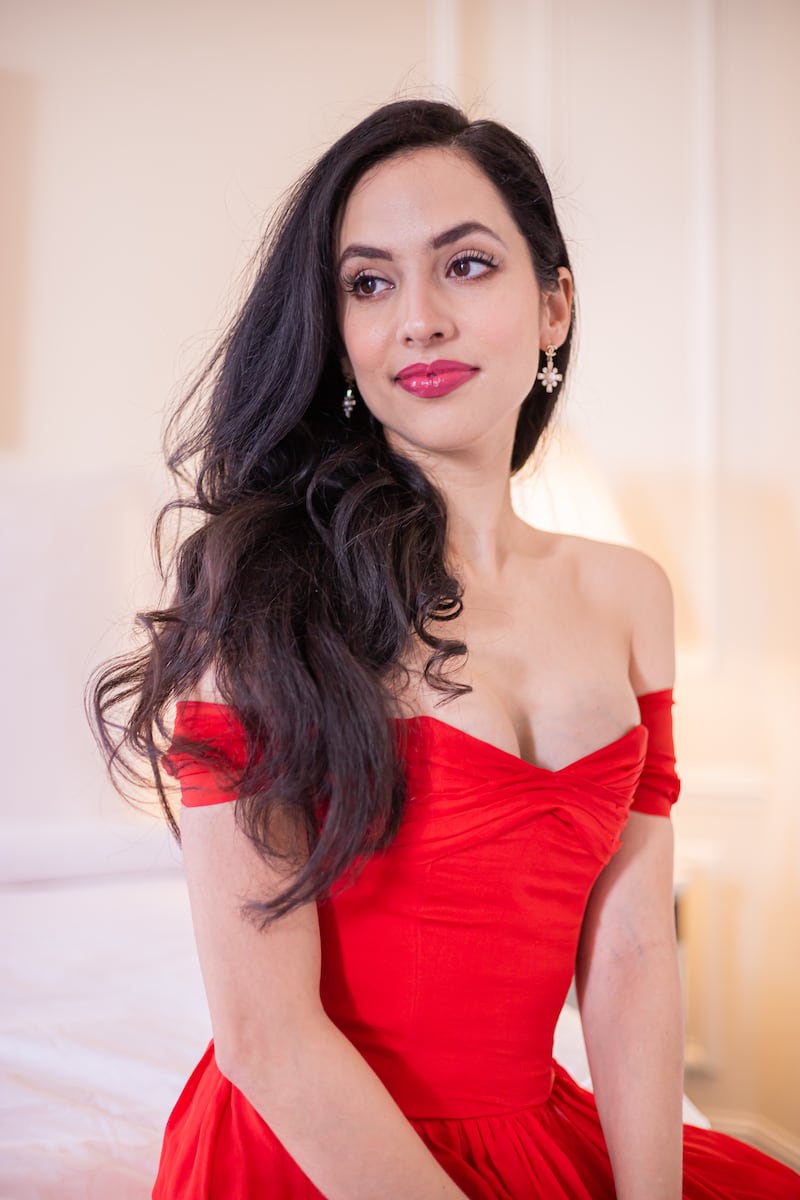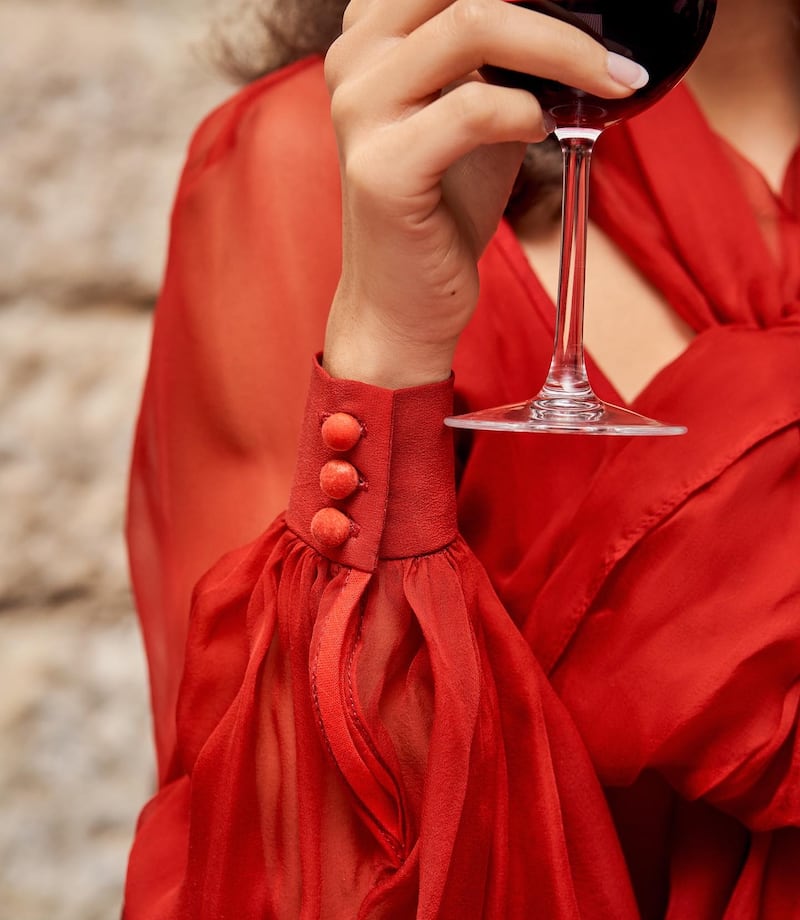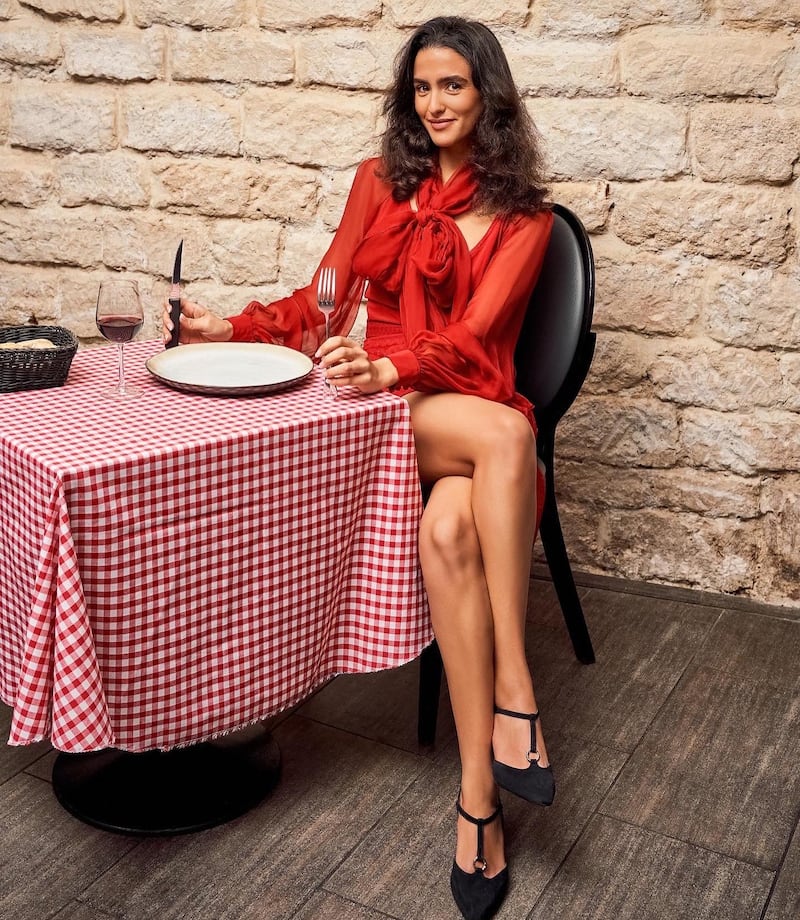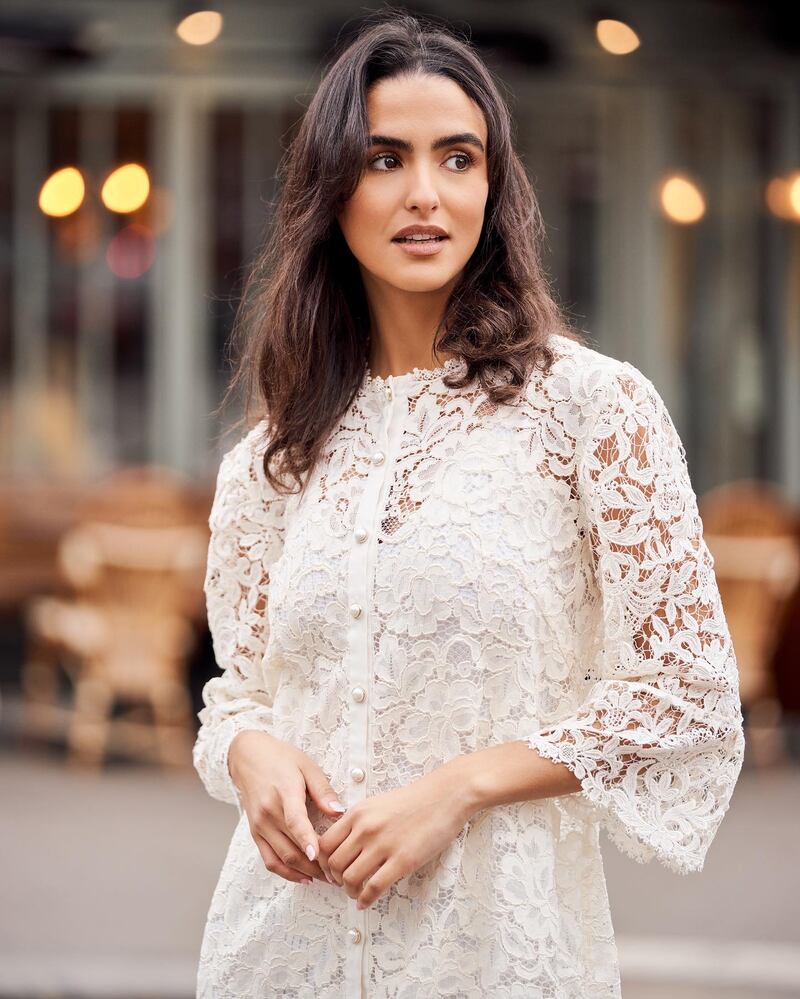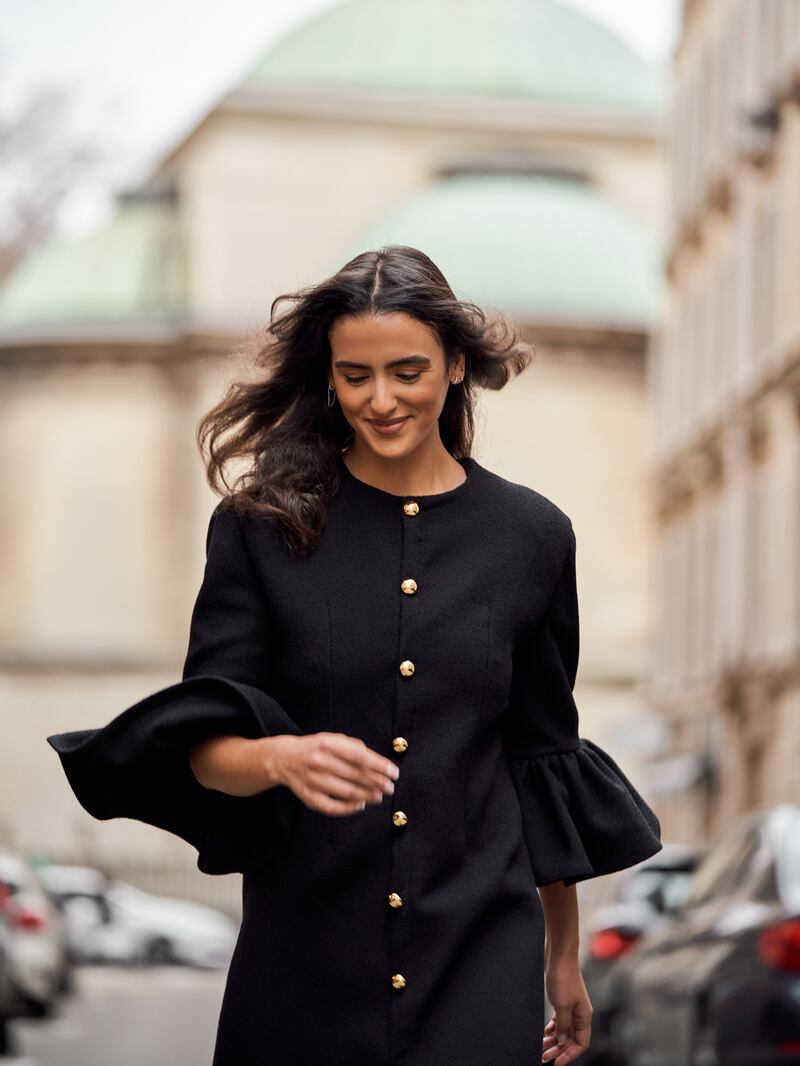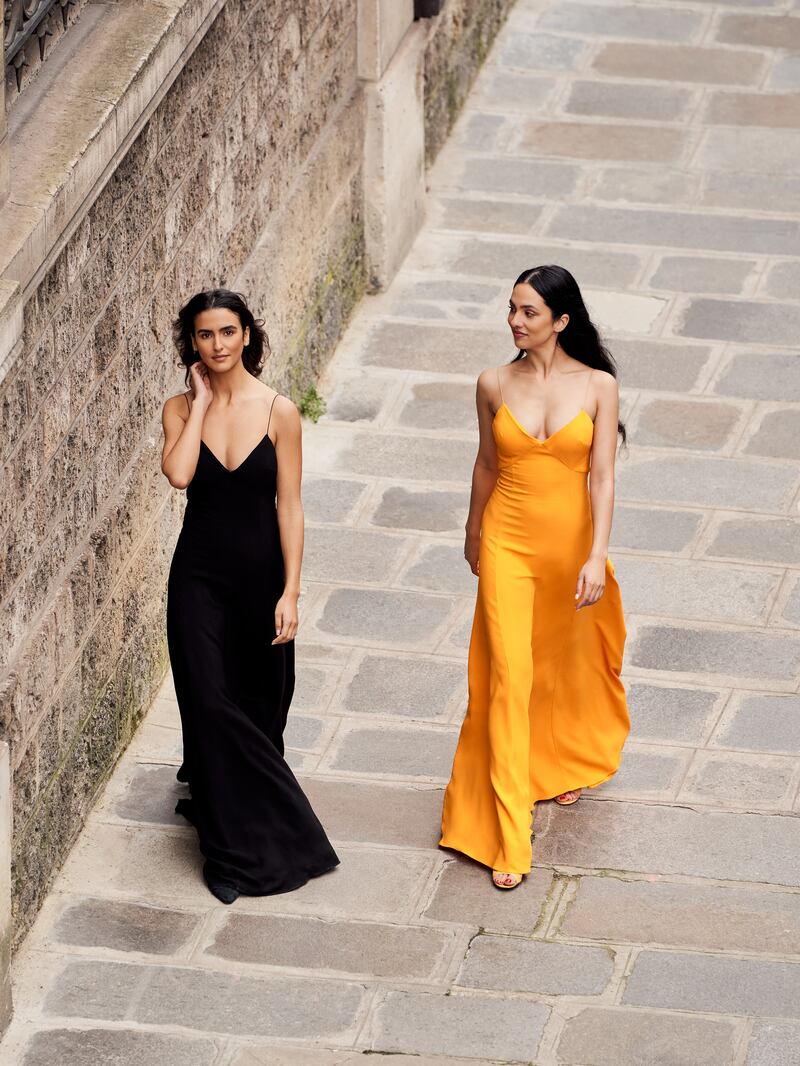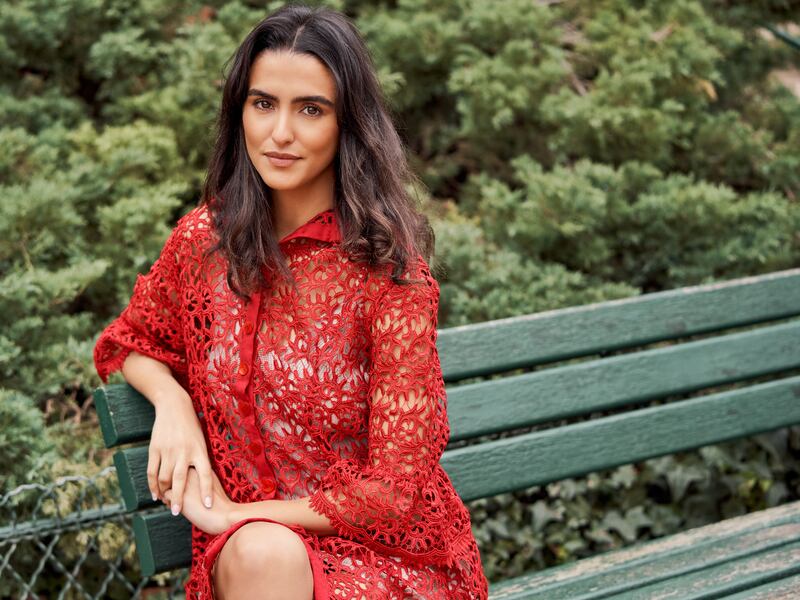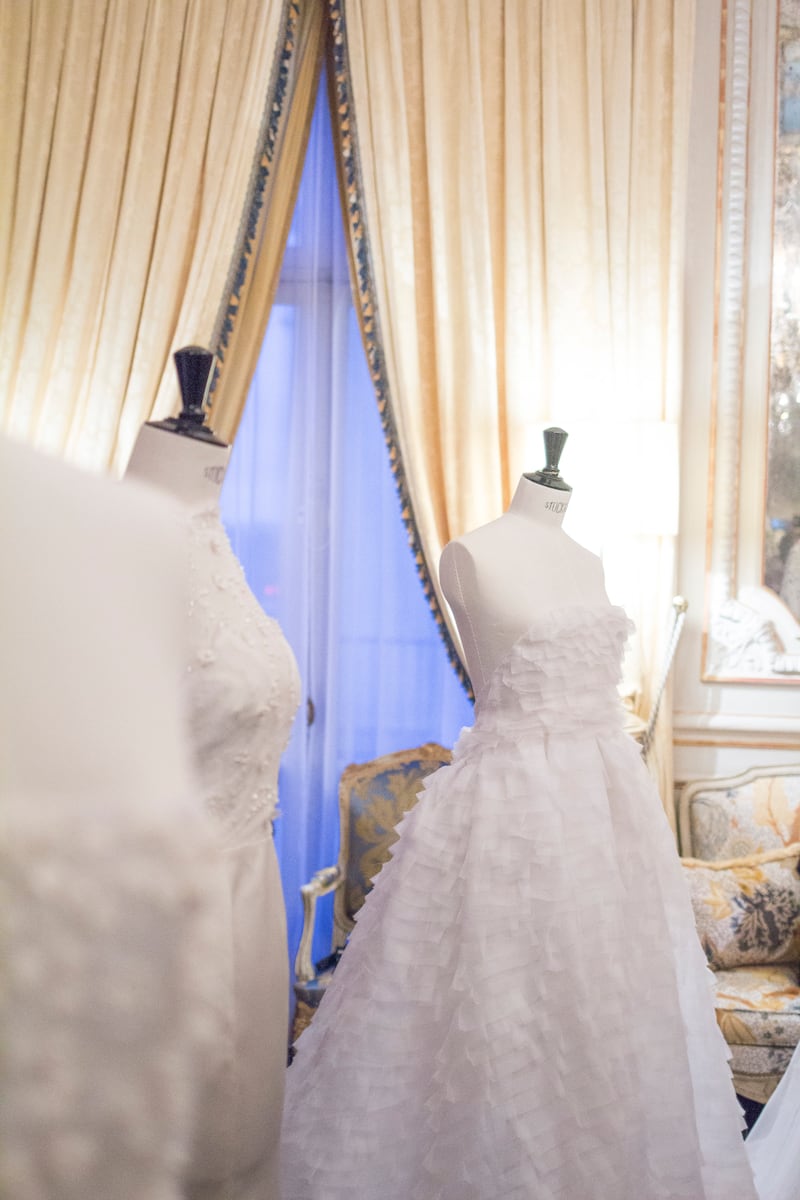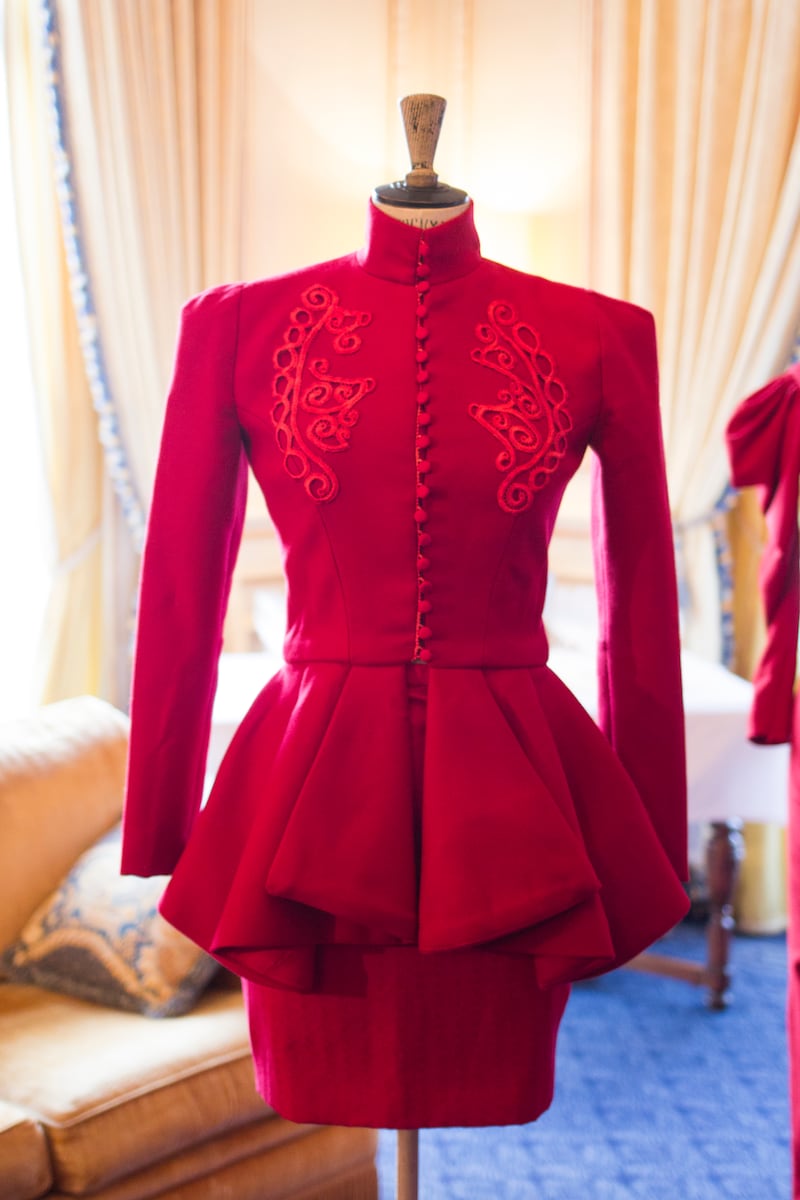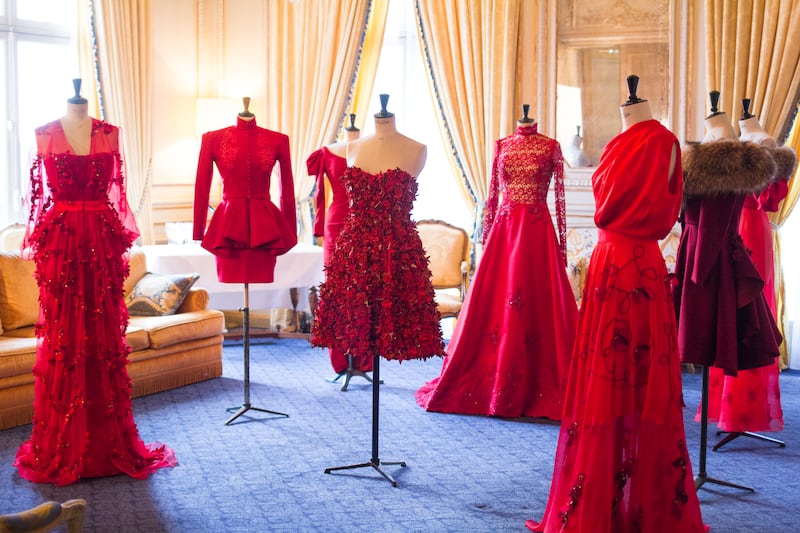As the first Saudi-French designer to graduate from the revered L'Ecole de la Chambre Syndicale de la Couture in Paris, Sakina Shbib has spent the past decade stitching elements from both cultures together for her collections.
She is proud to mix western and Middle Eastern identities, and likes to "celebrate the junction" of them. Additionally, she splits her time between the French capital, where her atelier Sakina Paris is, and Jeddah, Saudi Arabia, as she aims to capture the spirit of both for her growing number of fashion fans.
"My style combines French femininity with vivid, joyful colours and love for handmade embroideries, which are so beloved in the Arab culture," she tells The National.
Shbib's aptitude for fashion was sparked at an early age by her mother, who became her "lifetime inspiration".
"She was a dressmaker and I grew up observing her creativity and hard work," she says.
As a young student, Shbib started taking sketching classes and developed a strong appreciation for creativity. "I loved that time of contemplation when I would just look at my mom drafting a pattern with a pen or using sewing needles to finish off the dresses for her customers," she says.
Additionally, it was the "peace and beauty" found in a fashion atelier that amazed her.

On her 15th birthday, Shbib's mother gave her a Singer sewing machine and, by the age of 18, she had learnt how to make a dress by herself.
"People would always tell me my wardrobe was beautiful and asked where my dresses were coming from. I thought that people’s reactions were the best gratification and this is the time I started thinking seriously of a fashion career," she says.
Today, Shbib designs, manufactures and sells her pieces at her Parisian atelier. Her dresses are for women "who want to be elegant, and who value quality", and she describes her style as "classic, but with a twist of colours".
The Sakina Paris woman is "active, successful and still elegant without being intimidating or outdated", she says. Shbib aims to create contemporary pieces to be worn in 2022, though hopes they will stand the test of time and still be stylish as the decades roll by.
She says her "entrepreneurial inspiration" comes from her Saudi husband, who has taught her to "dream big, but take little risks" along the way.
Shbib also looks up to fashion designers of her generation, such as Amina Muaddi and Jeanne Damas. "I love how they built their brands with a strong artistic vision that became not just about fashion items, but a whole lifestyle for girls who can relate to them."
And she also learnt from the biggest names in international fashion, including Chanel, Givenchy and Alexandre Vauthier after graduating from L'Ecole de la Chambre Syndicale de la Couture in 2012.
"Right away, I started building my technique at Chanel atelier, first as an embroiderer within haute couture and the metiers d’art collections," she says.

After a few years, she also worked in quality management, saying: "I have learnt the rigour of haute couture and the specificities of an elite clientele requirements."
She joined Alexandre Vauthier in 2015 and spent a year as a sewing assistant, after which she joined Givenchy as a pattern-maker for its ready-to-wear collections.
Shbib launched her brand in 2017, at the age of 28, when she "felt strong enough to take on the challenge" and opened a small atelier in the 8th arrondissement of Paris with a team of three assistants and one PR agent.
"What I have learnt working for big fashion companies is that success requires a wide team of different technical experts and each department is dependent on every single talent who forms a big chain through strong management," says Shbib, now 33.
The most important element of any high-end garment, however, is the finishing, she says. "This is the first thing I have learnt working in the French maisons de couture, hence the choice of having, for example, French seams in my dresses, rather than a mere overlocking, or having a handmade blind hem in my coats."
These details strongly reflect the French savoir faire, but her Saudi influences come through in "a strong expression of beauty with a more sophisticated approach. The French style is elegance with a certain amount of minimalism," she says.
She exclusively designs dresses and defines her signature piece as a fitted garment that "holds beautiful, well-finished construction lines".
"I do not promote trousers, for example, simply because the symbol of femininity is dear to my heart," she adds. "I love when a dress can highlight some elements of beauty such as the waist being accentuated, or a slit on a leg that unveils the fluidity of the walk. No matter if the dress remains classic or tastefully seductive, as long as it is feminine above all.
"I want women to feel strong and empowered. A dress is like an armour. It protects you, but it also is an element of style that gives you confidence."

In her latest collection, Shbib uses specific materials and style references that echo French folklore, such as the Dentelle de Calais-Caudry, which is a lace made only in the north of France, while the Vichy patterns celebrate the brasserie culture and polka dots "take you back to the summery South of France".
"However, my colour palettes are inspired by my Middle Eastern heritage," she adds. "I particularly love to use reds, oranges and pinks. My signature on a couture dress is handmade embroideries and crystals — this is an element of style that is dear to Arab women."
Looking back over her career, Shbib says her journey took on a slightly different route that she'd initially envisioned. "I was a bit naive about what being an entrepreneur meant," she says.
"I thought I would spend days and days in my atelier sketching, prototyping garments and sourcing materials at the fabric market. But instead, I became a small company owner whose interests are mostly centred around management, recruitment, staff training, work organisation, logistics, accounting, budgeting and meetings to the point that expressing your creativity becomes challenged by other obligations."
She says she would not "trade the role for any other in the world", though, as seeing her artistic vision come to life is extremely gratifying.
"What is also a fundamental element of a fashion career is the relationship with the customer," she says. "You have to know what women like, what they want and don’t want to wear."
When she started out, Shbib remembers thinking that all women had the same body type and lifestyle.
"My first collection was mostly super-glamourous dresses with the same construction," she says. "I based my creativity on my ideal woman rather than real women."
When she worked for the haute couture houses, the prototype size was 36 and the models on the catwalk had the exact same body structure. "By the time I grew more mature in my vision, I found out that most women have some insecurities," she says. "Most of them don’t like their hips and legs, or tend to prefer stretchy fabrics for more comfort."
She realised "good designers" have to think of those practicalities before presenting a collection, while offering a variety of dresses that relate to different lifestyles and body types. She also wanted to master this art without changing her artistic identity.
"With the prominence of social media as a way of communication, it is also very useful to get the customers feedback and to collect information about what women like the most," she says.
While her business remains in Paris, and her dresses are available to buy online, she hopes to expand to the Gulf some day, including Saudi Arabia. "I believe the country will be booming with new talents in the coming five years," she says.
In particular, Shbib cites the government's new plans for the fashion sector as an opportunity. "It will mean that the young Saudi generation can learn the creativity, the artistic inspirations and a set of techniques from the fashion industry without having to move to Paris.
"I believe the girls of my generation want to be financially independent, successful in business but still beautiful, confident and outspoken," she adds. "We live in a generation where self-expression through social media matters more than it has ever before."
